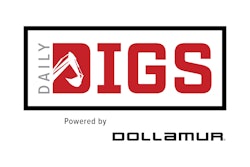 Photo of computerized woman doing aerobics
Photo of computerized woman doing aerobics
By 6:15 a.m., dressed in his state-of-the-art "smart shoes" and "smart clothes," Mr. Allen heads for the track. The shoes automatically adjust the heel cushioning to his weight and stride. The clothes tell him when he's sufficiently warmed up and then monitor his performance during the run. Time flies with each lap as he listens to his favorite music from the digital audio player embedded in his shirt, checks stock prices as they roll along on the windows lining the track, and reads a couple of incoming e-mail messages on the flexible display screen sewn into his sleeve.
Is this scenario possible? Considering that the basic technology to do all of this (and more) already exists, yes -- it's very possible.
Predicting which of these sorts of applications will actually be embraced by consumers is another matter, of course. Without the benefit of a high-tech crystal ball, it is hard to know how future technology will impact the business of fitness and recreation. Even so, this topic should be a critical consideration when planning your new facility or developing your next business plan.
Opinions vary as to exactly what will happen and when, but one thing seems certain: There will soon be a host of new opportunities to use technology in fitness and recreation centers. Some may help improve cost efficiencies of the operation. Some may increase revenues by attracting more users and members. Others may simply become a necessary part of maintaining a competitive center.
How can you plan for what you can't predict? The first step in planning for the future is to imagine the possibilities. (See the following pages for some examples.) Keep your mind wide open and stretch your imagination, but stay grounded; what sells will be whatever best serves the majority of users' wants and needs.
Second, get good advice. Work with design professionals who have intimate knowledge of industry trends and customer expectations, as they have the best ability to anticipate future needs. Do your own homework about new technologies. And be sure to ask your customers what they want, need and expect. Have them help you evaluate new technologies. (Your youngest customers may know the most about this topic.)
Third, evaluate an innovation's potential impact on business. Will it enhance long-term operating efficiencies? Will it improve marketability? Will it be deemed a necessary cost of doing business?
Last, incorporate some flexibility into your facility design so that accommodating new technologies will be easier and more affordable. Plan for ease of future infrastructure modification; hundreds of dollars worth of conduit installed under a floor now could save thousands of dollars later. Plan for raceways and routes for future technology. Don't minimize mechanical room needs, and avoid interior load-bearing walls that limit future flexibility.
Future technologies will offer interesting challenges as well as exciting new possibilities. They will impact our lives and businesses and require innovative thinking and practical implementation. So, imagine the possibilities, plan for the challenges and be prepared for an exciting future.
Contributing authors of "Facility Futures" included Al Oberlander, Jack Patton, Kevin Stubbs and Paul Klein, all of whom are partners in RDG Planning & Design (www.rdgusa.com), 301 Grand Ave., Des Moines, IA, 50325, 515/288-3141.
 Photo of computerized woman doing aerobics
Photo of computerized woman doing aerobics
By 6:15 a.m., dressed in his state-of-the-art "smart shoes" and "smart clothes," Mr. Allen heads for the track. The shoes automatically adjust the heel cushioning to his weight and stride. The clothes tell him when he's sufficiently warmed up and then monitor his performance during the run. Time flies with each lap as he listens to his favorite music from the digital audio player embedded in his shirt, checks stock prices as they roll along on the windows lining the track, and reads a couple of incoming e-mail messages on the flexible display screen sewn into his sleeve.
Is this scenario possible? Considering that the basic technology to do all of this (and more) already exists, yes -- it's very possible.
Predicting which of these sorts of applications will actually be embraced by consumers is another matter, of course. Without the benefit of a high-tech crystal ball, it is hard to know how future technology will impact the business of fitness and recreation. Even so, this topic should be a critical consideration when planning your new facility or developing your next business plan.
Opinions vary as to exactly what will happen and when, but one thing seems certain: There will soon be a host of new opportunities to use technology in fitness and recreation centers. Some may help improve cost efficiencies of the operation. Some may increase revenues by attracting more users and members. Others may simply become a necessary part of maintaining a competitive center.
How can you plan for what you can't predict? The first step in planning for the future is to imagine the possibilities. (See the following pages for some examples.) Keep your mind wide open and stretch your imagination, but stay grounded; what sells will be whatever best serves the majority of users' wants and needs.
Second, get good advice. Work with design professionals who have intimate knowledge of industry trends and customer expectations, as they have the best ability to anticipate future needs. Do your own homework about new technologies. And be sure to ask your customers what they want, need and expect. Have them help you evaluate new technologies. (Your youngest customers may know the most about this topic.)
Third, evaluate an innovation's potential impact on business. Will it enhance long-term operating efficiencies? Will it improve marketability? Will it be deemed a necessary cost of doing business?
Last, incorporate some flexibility into your facility design so that accommodating new technologies will be easier and more affordable. Plan for ease of future infrastructure modification; hundreds of dollars worth of conduit installed under a floor now could save thousands of dollars later. Plan for raceways and routes for future technology. Don't minimize mechanical room needs, and avoid interior load-bearing walls that limit future flexibility.
Future technologies will offer interesting challenges as well as exciting new possibilities. They will impact our lives and businesses and require innovative thinking and practical implementation. So, imagine the possibilities, plan for the challenges and be prepared for an exciting future.




































